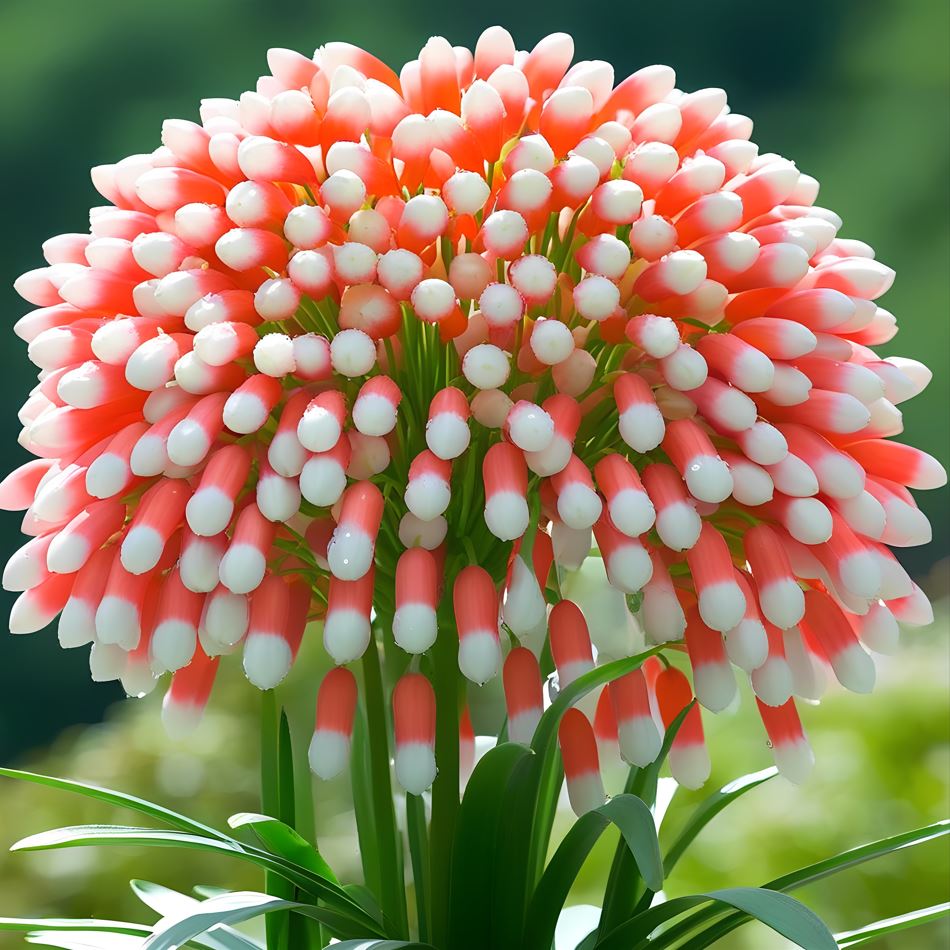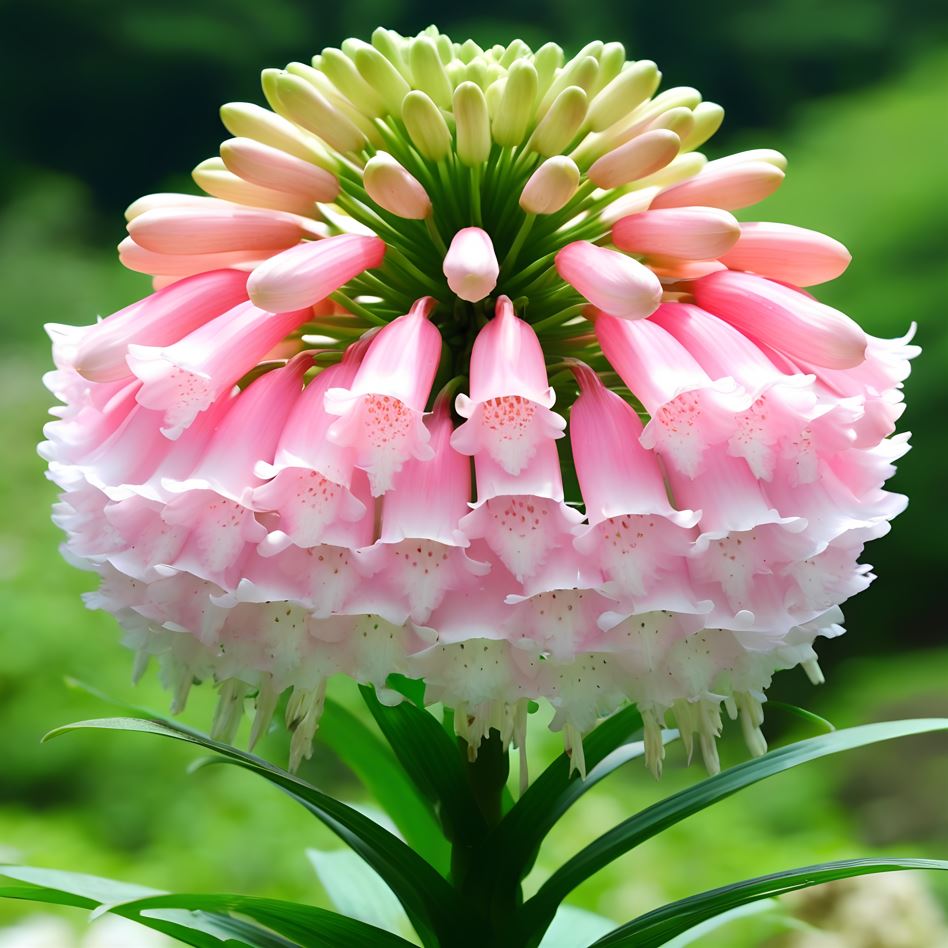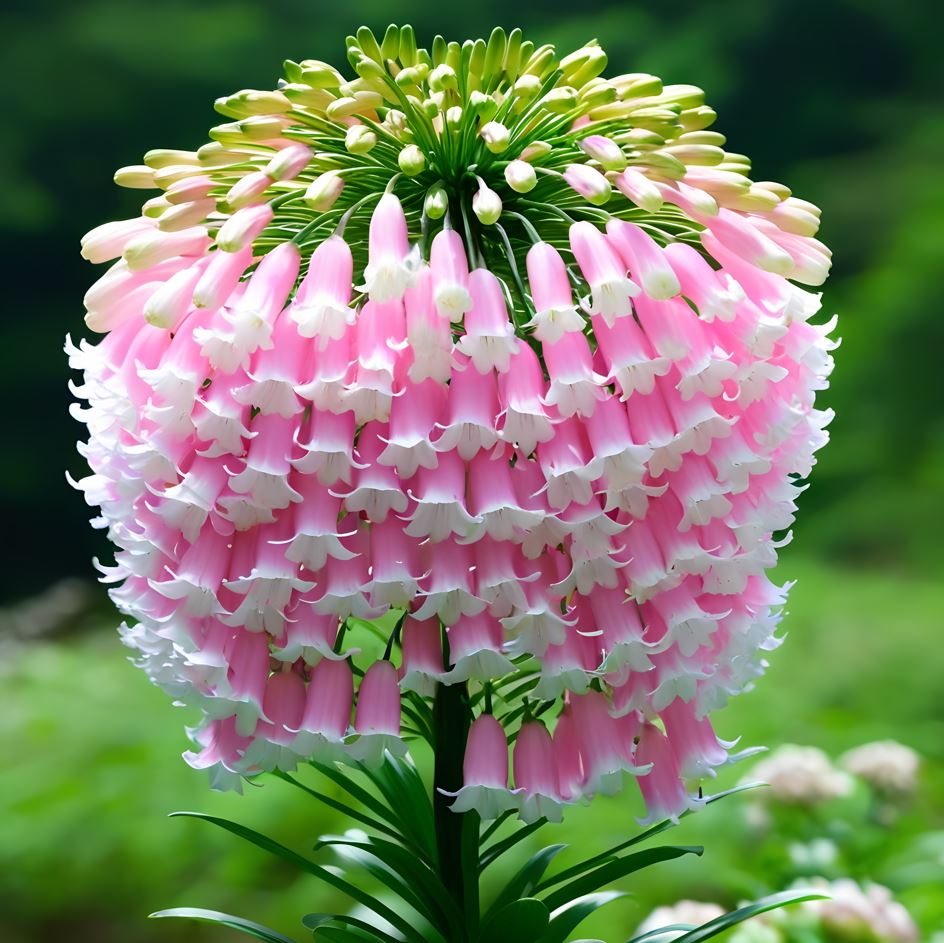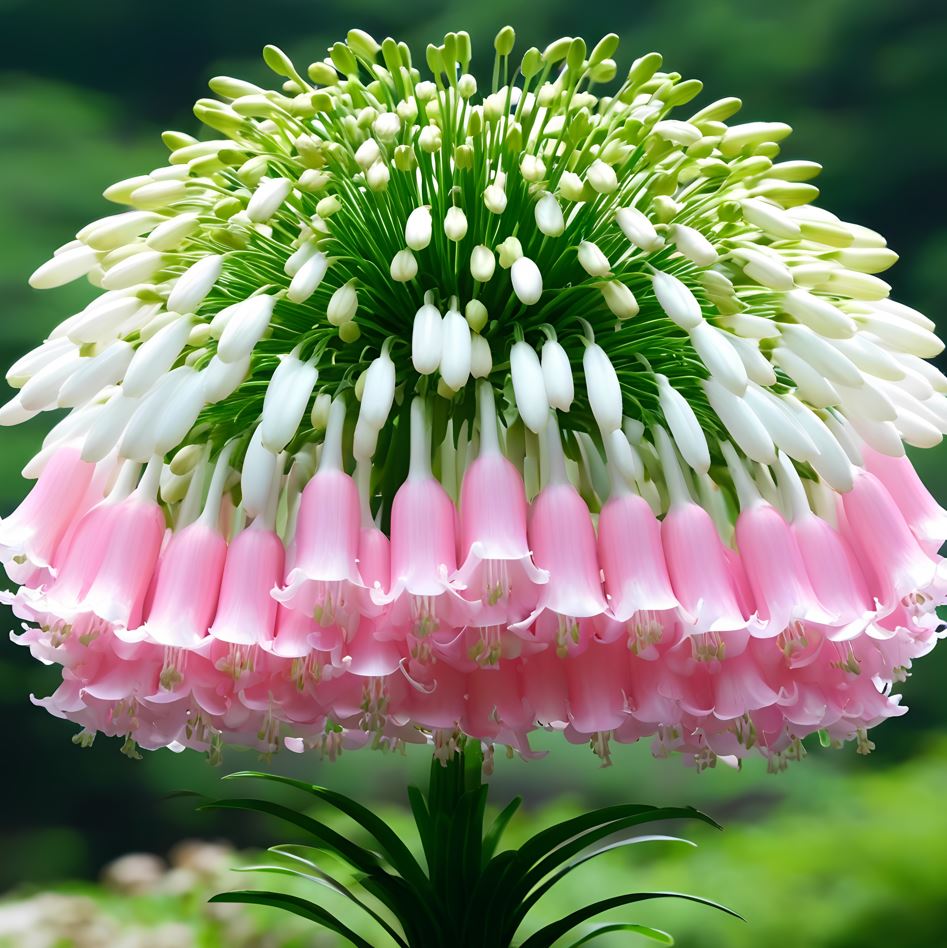Cultivating the enchanting Pink Bell Lily (Lilium ‘Pink Bell’) can transform your garden into a vibrant tapestry of color and fragrance. These exquisite flowers are not just a feast for the eyes; they also symbolize admiration and femininity, making them a perfect addition to any landscape. Imagine walking through your garden surrounded by these delicate blooms, their soft pink hues gently swaying in the breeze—a true hallmark of spring.
Pink Bell Lily (Lilium ‘Pink Bell’) with white and pink bell-shaped flowers
A beautiful Pink Bell Lily (Lilium ‘Pink Bell’) featuring unique bell-shaped flowers with delicate white and pink petals.
Selecting the Right Environment
Climate Considerations
The first step in cultivating Pink Bell Lilies is understanding their preferred climate zones. According to resources like Easy to Grow Bulbs, selecting the right type of bulb for your specific climate zone is crucial. For instance, if you are in Zone 5, you might explore various spring-planted bulbs that complement this beautiful lily while ensuring proper growth conditions. Zone 6 offers even broader options, with a selection of bulbs ideal for those warmer temperatures.
When it comes to climate, Pink Bell Lilies thrive in temperate regions with four distinct seasons. They prefer cool, moist springs and moderate summers, with a gradual transition into autumn. In regions with harsh, prolonged winters, you may need to provide additional protection for the bulbs to ensure their survival. Carefully researching your local climate patterns and selecting the appropriate lily variety can make all the difference in cultivating a successful and vibrant display.
Soil Requirements
Lilies, including the Pink Bell, thrive in well-drained, fertile soil enriched with organic matter. You can augment your soil by incorporating compost or aged manure, ensuring it retains moisture without becoming soggy. This careful balance prevents bulb rot, allowing your Pink Bell Lilies to flourish beautifully.
Pink Bell Lily (Lilium ‘Pink Bell’) with dense clusters of pink and white bell-shaped flowers
A striking display of the Pink Bell Lily (Lilium ‘Pink Bell’) featuring densely packed clusters of bell-shaped flowers in a beautiful blend of pink and white hues.
When preparing the planting site, aim for a soil pH between 6.0 and 7.0, which provides the optimal nutrient balance for lilies. If your soil is too acidic, you can add lime to raise the pH; conversely, if it’s too alkaline, you can incorporate sulfur to lower the pH. Taking the time to amend your soil properly will create the perfect foundation for your Pink Bell Lilies to thrive.


Planting Instructions
Timing & Spacing
To grow Pink Bell Lilies, timing is everything. Plant them in the spring when the soil has warmed up, ideally between March and May. The spacing should be about 12-18 inches apart to allow each plant room to grow and showcase their full beauty. Visualize a canvas where each flower acts as a brushstroke, contributing to the overall masterpiece of your garden.
When planting, ensure that the bulbs are placed at a depth of about 6-8 inches, with the pointed end facing upwards. This depth provides the necessary insulation for the bulbs, protecting them from temperature fluctuations and ensuring a robust root system. As the plants mature, they will develop a network of underground stems and roots, anchoring them firmly in the soil.
Watering Practices
Once planted, ensure that your Pink Bell Lilies receive consistent watering, particularly during dry spells. However, be cautious not to overwater, as this can lead to fungal issues. Think of watering as a nurturing embrace—gentle yet consistent, fostering growth without overwhelming the roots.
Pink Bell Lily (Lilium ‘Pink Bell’) with layered pink and white bell-shaped flowers
A captivating image of the Pink Bell Lily (Lilium ‘Pink Bell’) featuring layered clusters of bell-shaped flowers, blending soft pink and white colors.
During the growing season, aim to keep the soil moist but not saturated. Lilies have a high water demand, especially during the crucial flowering period. Providing a deep, thorough watering every week or two, depending on your local climate, can help maintain the optimal soil moisture levels. Avoid wetting the foliage when watering, as this can increase the risk of disease.
Enhancing Growth with Companion Plants
Color Harmony
Companion planting can elevate the aesthetic appeal of your garden significantly. Pair Pink Bell Lilies with other flowering plants, such as white daisies or purple salvias, which create a stunning contrast against their soft pink petals. This blend not only enhances visual interest but attracts beneficial pollinators, creating a lively ecosystem within your garden.
When considering companion plants, focus on species that share similar growing requirements, such as sunlight and soil preferences. This synergy ensures that all the plants in your garden thrive together, creating a harmonious and visually stunning display. Experiment with different color combinations and textures to find the perfect balance that complements your Pink Bell Lilies.
Nutrient Support
Consider incorporating other flowering species that share similar nutrient needs, thereby simplifying your care routine. For instance, planting alongside Petunias could encourage a synergy that optimizes nutrient uptake and enhances floral display. You can find more information about pink flowers and their companions from gardening resources like Epic Gardening, which provides a plethora of tips on flower combinations.
Vibrant Pink and White Bell-Shaped Flower Cluster
An eye-catching flower cluster featuring a dense arrangement of bell-shaped buds with a vibrant gradient of pink to white hues.
By strategically selecting companion plants, you can create a diverse and self-sustaining garden ecosystem that supports the growth and health of your Pink Bell Lilies. This approach not only enhances the visual appeal of your landscape but also helps to maintain a balanced and thriving environment.
Caring for Your Pink Bell Lilies
Pest Management
Monitoring for pests is essential in maintaining the health of your Pink Bell Lilies. Introduce natural predators like ladybugs to your garden, which will help control aphid populations. Likewise, using organic pest deterrents can safeguard your blooms without harming the environment.
Be vigilant for signs of pest infestations, such as chewed leaves or discolored foliage. Quickly addressing any issues can prevent the problem from escalating and protecting the overall health of your lilies. Additionally, maintaining good garden hygiene, such as removing fallen leaves and debris, can help discourage pests from taking up residence.
Seasonal Maintenance
As the seasons change, remember to cut back the foliage after blooming to conserve energy for next year’s blooms. It’s akin to letting your thoughts settle after a busy day—necessary for rejuvenation and growth.
In the autumn, once the foliage has died back, you can gently remove the dead material to prevent the accumulation of debris around the bulbs. This practice helps to reduce the risk of disease and ensure that the bulbs have the necessary resources to store energy for the upcoming growing season.
Conclusion
By integrating thoughtful planting techniques and considerations for your specific climate zone, you can cultivate a breathtaking display of Pink Bell Lilies that not only beautifies your space but also enlivens your spirit throughout the blooming season. From selecting the right environment to providing meticulous care, each step in the process contributes to the creation of a truly enchanting garden oasis. Embrace the beauty and fragrance of the Pink Bell Lily, and let it inspire you to cultivate a vibrant and thriving landscape that brings joy and serenity to your world.

